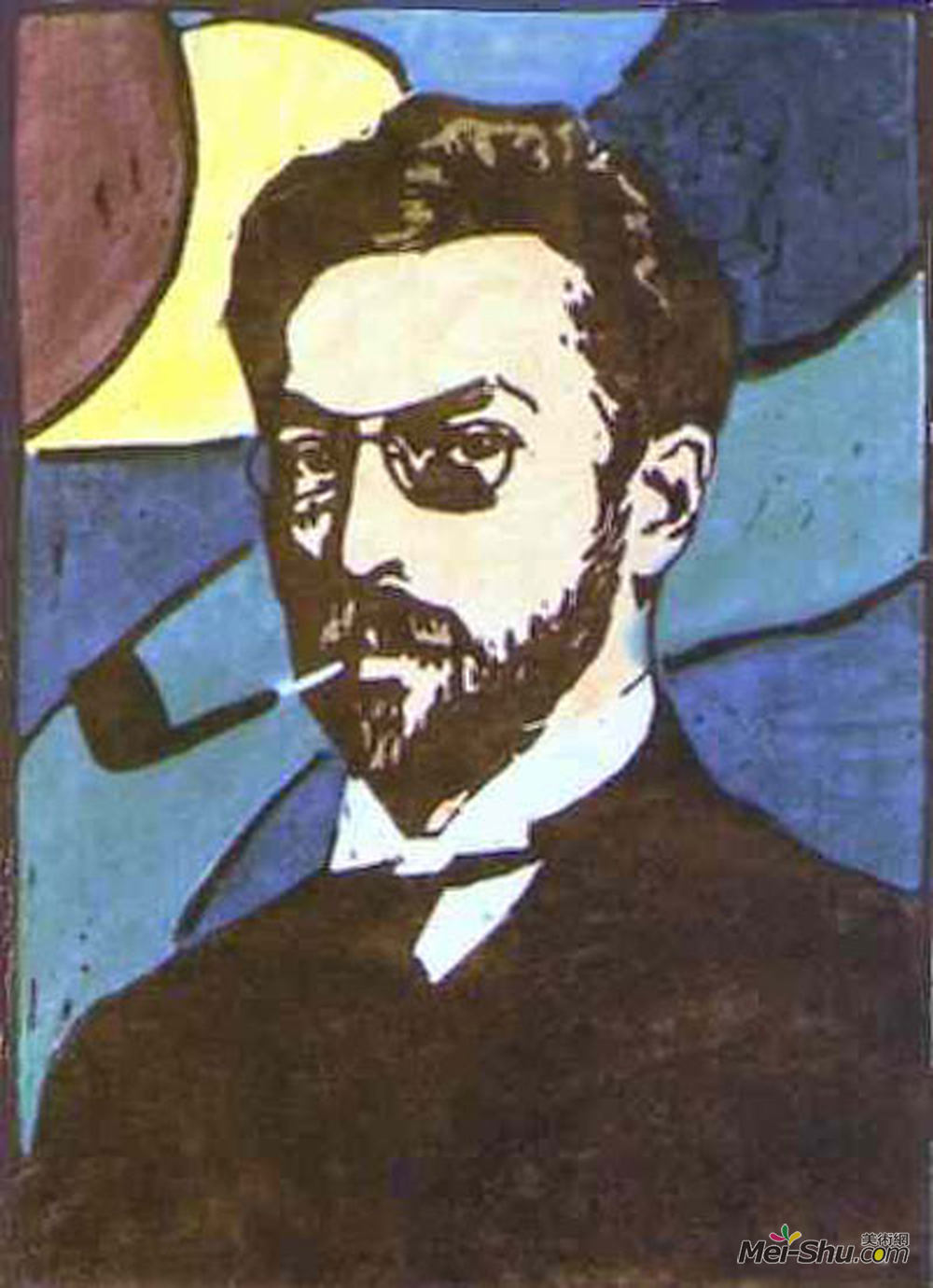
威斯利·康定斯基(Wassily Kandinsky)
艺术家: 威斯利·康定斯基
生于: 1866年12月16日;俄罗斯联邦莫斯科
卒于: 1944年12月13日;塞纳河畔纳伊,法国
国籍: 俄罗斯联邦
流派: 表现主义,抽象主义
领域: 绘画,雕刻,艺术理论
受影响: 爱德华·蒙克,Aristarkh Lentulov,罗伯特·德劳奈,保罗·塞尚,克劳德·莫奈
影响: 约瑟夫·亚伯斯,埃贡·席勒,Georgia O'Keeffe,Karl Otto Gotz,Nasreen Mohamedi,William Baziotes,Arshile Gorky,Hans Hofmann
朋友: 保罗·克利,弗朗茨·马克,Alexej von Jawlensky,Vadym Meller
机构: 慕尼黑(慕尼黑美术学院学院,慕尼黑,德国),
Wassily Kandinsky是第一位现代抽象绘画的创造者,他是一位颇有影响的俄国画家和艺术理论家。年轻时,他在莫斯科大学学习法律和经济学,后来在爱沙尼亚多尔帕特大学被聘为罗马法教授。他30岁时开始在慕尼黑大学学习绘画,专注于生活绘画、素描和解剖学。他没有立即被学校录取为艺术系学生,因此在此期间,他开始自学艺术,从莫奈的《干草垛》和理查德·瓦格纳的《洛亨格林》中获得艺术见解。他也受到人类学教导的影响,因此,他的抽象作品是他强烈的哲学信仰的创作,基于他自己与艺术的个人经验。对内在美的热爱仍然是他艺术的中心主题。1914年,第一次世界大战开始后,康定斯基回到莫斯科,在那里,他在艺术界没有找到多少灵感。在1921,他回到慕尼黑,在那里他在包豪斯建筑学院教书,直到1933年被纳粹关闭。他是一位活跃的艺术理论家,出版了许多关于艺术理论的书籍,并发展了一个关于颜色和形状表达声音和表现人类情感能力的复杂而深刻的情感理论。他最终前往美国讲课。包豪斯一家关门后,康定斯基搬到了巴黎,在那里他与其他印象派画家或立体派画家隔绝。后来他成了法国公民,在那里度过了他的余生。他的遗产在新创建的康定斯基奖中得以延续,该奖给一位有前途的俄罗斯青年艺术家55000欧元的奖金,并试图提升俄罗斯当代艺术的地位。
Artist :Wassily Kandinsky
Additional Name :Василий Кандинский
Born : Moscow, Russian Federation
Died : Neuilly-sur-Seine, France
Nationality :Russian
Art Movement :Expressionism,Abstract Art
Field :painting,engraving,art theory
Influenced by :edvard-munch,aristarkh-lentulov,robert-delaunay,paul-cezanne,claude-monet
Influenced on :josef-albers,egon-schiele,georgia-o-keeffe,karl-otto-gotz,nasreen-mohamedi,william-baziotes,arshile-gorky,hans-hofmann
Friends and Co-workers :paul-klee,franz-marc,alexej-von-jawlensky,vadym-meller
Art institution :Akademie der Bildenden Künste München (Munich Academy), Munich, Germany,
The creator of the first modern abstract paintings, Wassily Kandinsky was an influential Russian painter and art theorist. In his youth, he studied law and economics at the University of Moscow, and was later hired as a professor of Roman law at the University of Dorpat in Estonia. He was 30 years old when he began his studies in painting, focusing on life drawing, sketching, and anatomy, at the University of Munich.
He was not immediately accepted into the school as an art student, and so in the meantime he began learning art by himself, gaining artistic insight from Monet’s Haystacks and Richard Wagner’s composition Lohengrin. He was also influenced by the teachings of anthroposophy, as such, his abstract works were a creation of his intense philosophical beliefs, based on his own personal experiences with art. The devotion to inner beauty remained a central theme in his art.
In 1914, after the beginning of World War I, Kandinsky returned to Moscow, where he did not find much inspiration in the art world. In 1921, he returned to Munich, where he taught at the Bauhaus school of architecture, until it was closed by the Nazis in 1933. He was an active art theorist, publishing a number of books on art theory, and developing a complex and deeply emotional theory about the ability of colors and shapes to represent sound and evince human emotion. He eventually traveled to the United States to lecture on the topic.
After the Bauhaus was closed, Kandinsky moved to Paris, where he was mostly isolated from the other Impressionist or Cubist painters. He later became a French citizen, and lived the rest of his days there. His legacy lives on in the newly created Kandinsky Award, which rewards a promising young Russian artist a 55,000 euro prize, and attempts to elevate the status of contemporary Russian art.